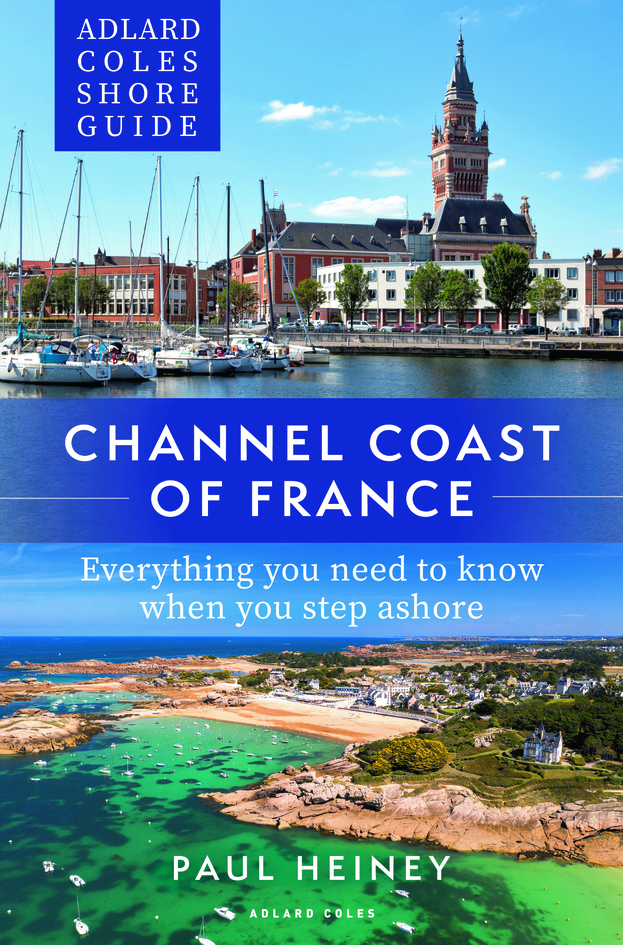After the challenges of the past few years, it seems that things are finally getting back to normal. If you’re sailing to France this year, you won’t want to miss the first in our new series of Shore Guides from Paul Heiney, which include everything you need to know when you step ashore.
Phew! Just back from Brittany. Seventeen harbours, 1,700 miles and all in seven days. Not bad, eh? And no, I haven’t given up sailing in favour of speed-boating – I did it all by car.
I’ve sailed in Brittany on and off for many years, but the reason for taking to the road was to research two books in a new series from Adlard Coles, called Shore Guides. The first, which is available now, covers the Channel coast of France from Dunkerque to L’Aber Wrach; the second will be coming next year and it takes us down the Atlantic coast of France from Brest to La Rochelle.
There are plenty of excellent pilot books to help you through the navigational intricacies of these coastlines – which are many – but even the best pilot books give you little support once the boat is secure and you step ashore. I know there is fun in exploring, and I wouldn’t want to spoil that for you, but it would be nice to know in which direction to head if in urgent need of milk or tea bags, wouldn’t it? Or even what sort of town you have arrived at, and what makes it so interesting? If you are sailing with family, the most urgent question might be ‘where is the beach? And which way do we go to find chips?’ They might not seem vital questions from a sailing point of view, but they are hugely important when it comes to having a good time ashore which, if we are honest, is pretty much half of a sailing holiday.
Entering a strange harbour in a foreign country is never a relaxing experience even for the best of sailors. Once you’ve worked the tides, the locks, the unfamiliar layout of the pontoons, not forgetting those cursed hooped cleats which the French seem rather keen on which makes it impossible to take a quick turn on anything. Once you’ve done all that you want to take a pause, a deep breath, put the kettle on, and get your bearings. It is my hope that this is exactly the point at which you will put the pilot books away and pick up your Shore Guide.
I always like to have a sense of history of a place, what happened here in years past that makes it the place it is today? I like to understand what makes a town tick; perhaps it was fishing or, in the case of one Brittany town, Roscoff, it was onions! There is hardly a small town in Brittany which does not have its own museum of which they are hugely proud. I am never disappointed after sticking my head into one of them, but they are easy to miss, and the Shore Guides will point you in the right direction.
I’ve tried to steer clear of offering navigational advice, which is best left to the pilot book authors, but I have attempted to give you a shorthand version of what you are in for if you are heading somewhere new for the first time. I always find it useful, when planning a trip, to have in mind which are the dead easy harbours to get in and out of, and which might cause the brow to sweat a little. It’s always best to know if you’re in for a challenge, or an easy ride.
Even though you are on a sailing holiday, normal life goes on. You need to know where the laundry facilities might be, a shop for buying the basic necessities or a superstore for replenishing depleted food lockers. Is there a train station from which you might be able to make a crew change? And if it turns out to be one of those inevitable rainy days and the cabin starts to feel more like prison, what’s nearby to provide amusement.
I’ve been taking my camera with me everywhere I go, trying to give you a quick impression of the place you’re heading for, and I find it interesting that it’s often in the back streets where you start to get a sense of the place. Many of the harbours in these books are hugely popular, and at times during the season you’ll feel it’s less like a holiday and more like being part of a rugby scrum. If that’s the case, head away from the tourist drag and you’ll be surprised at how little walking you have to do to suddenly find yourself pretty much on your own.
That would be the perfect time to find a quiet little cafe or bar, the throng hasn’t discovered, and order yourself up a coffee or a glass of the local wine, and thumb through your Shore Guide to find where to go next. Remember, the Shores Guides take over where all the other books stop.
Adlard Coles Shore Guide: Channel Coast of France (ISBN 9781472985699) is available now, RRP £18.99, or buy direct from our website with a 10% discount: https://www.bloomsbury.com/uk/adlard-coles-shore-guide-channel-coast-of-france-9781472985699/

